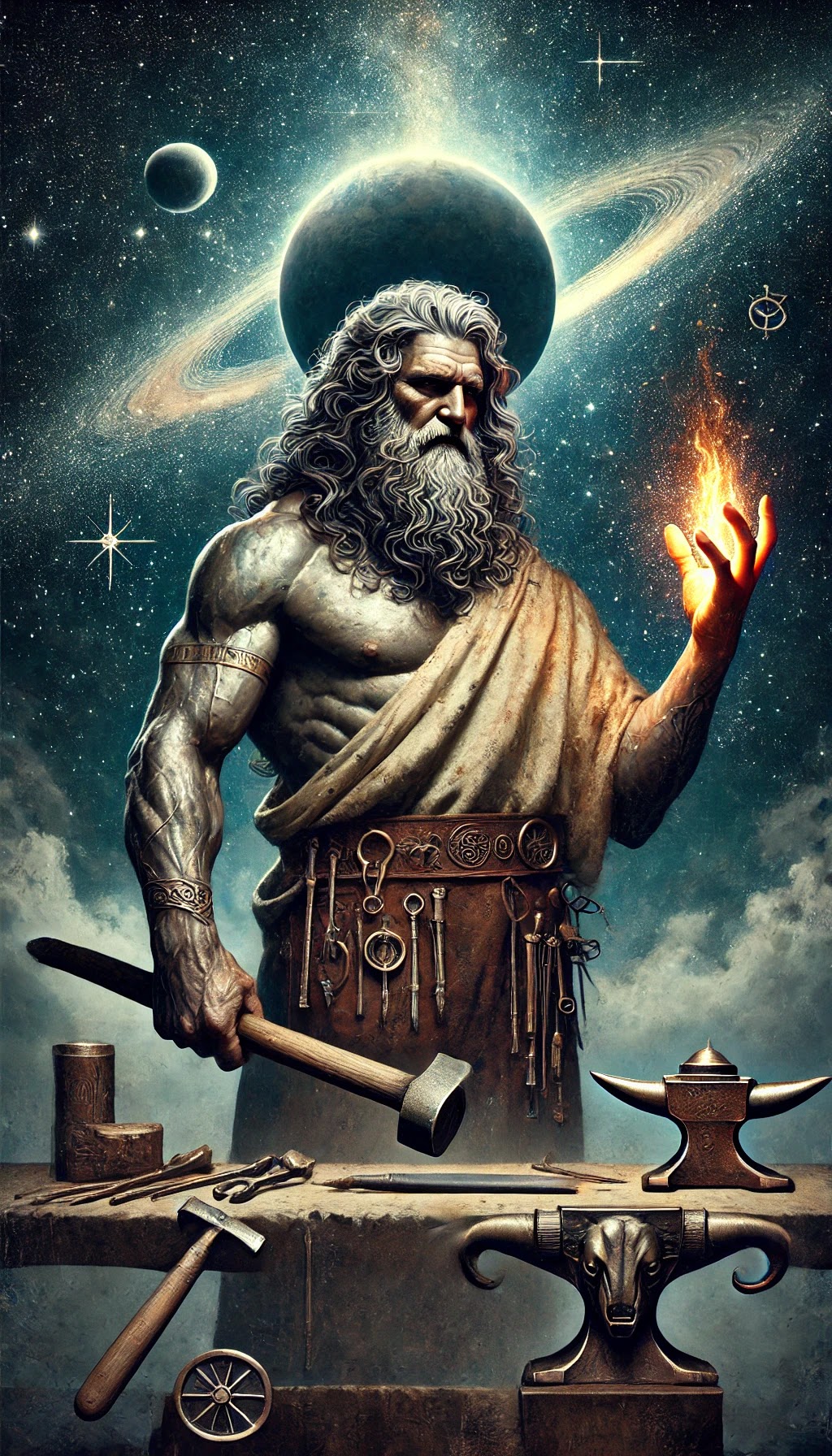Iapetus: The Titan of Mortality and Father of Prometheus in Greek Mythology
Iapetus (Ἰαπετός), one of the twelve Titans in Greek mythology, is associated with mortality and the human condition. Known as the progenitor of several significant figures in Greek myth, Iapetus plays a crucial role in the mythological framework that explains the origins and nature of humanity. This blog post explores the origins, characteristics, and significance of Iapetus, highlighting his domain over mortality and his enduring legacy.
Origins and Nature of Iapetus
Iapetus is a primordial deity, born from the union of Uranus (Sky) and Gaia (Earth). As a member of the first generation of Titans, Iapetus is intrinsically linked to the natural world and the cosmic order.
- Parentage: Iapetus is the son of Uranus and Gaia, placing him among the earliest deities in Greek mythology.
- Siblings: His siblings include other prominent Titans such as Cronus, Rhea, Oceanus, Tethys, Hyperion, Theia, Coeus, Phoebe, Mnemosyne, Themis, and Crius.
Characteristics and Symbolism of Iapetus
- Personification of Mortality: Iapetus is often associated with mortality and the human condition. His role emphasizes the finite nature of human life and the inevitability of death.
- God of the West: Iapetus is sometimes associated with the western pillar that holds up the sky, symbolizing the boundary between day and night, life and death.
- Symbols of Mortality and Human Nature: Iapetus is frequently depicted with symbols that reflect his connection to mortality, such as a skeletal figure or an hourglass, emphasizing the passage of time and the transient nature of life.
Mythological Role of Iapetus
Iapetus’s story and influence are integral to the Greek mythological understanding of mortality, human nature, and the origins of humanity.
Marriage to Clymene:
- Union with Clymene: Iapetus is married to Clymene, an Oceanid and daughter of Oceanus and Tethys. Their union symbolizes the connection between the Titan of mortality and the nurturing aspects of water and life.
- Progeny: Together, Iapetus and Clymene have four significant children: Prometheus, Epimetheus, Atlas, and Menoetius. These offspring play crucial roles in the mythological narrative and the development of human traits.
Progenitor of Key Mythological Figures:
- Prometheus: Prometheus is known as the benefactor of humanity, who defies Zeus to bring fire and knowledge to mortals. He represents foresight and the quest for knowledge.
- Epimetheus: Epimetheus, whose name means "afterthought," is known for his role in the creation of Pandora and his lack of foresight. He represents the concept of hindsight and the consequences of actions.
- Atlas: Atlas is condemned to hold up the sky as punishment for his role in the Titanomachy. He symbolizes endurance and the weight of responsibility.
- Menoetius: Menoetius, whose name means "doomed might," is known for his hubris and violent nature. He is struck down by Zeus and cast into Tartarus, symbolizing the destructive aspects of human nature.
Role in the Titanomachy:
- Conflict with the Olympians: During the Titanomachy, the great war between the Olympian gods and the Titans, Iapetus fought alongside his fellow Titans. Despite his strength and influence, he was ultimately defeated and imprisoned in Tartarus with the other Titans.
Legacy and Influence of Iapetus
Iapetus’s story is rich with symbolism and has had a lasting impact on both Greek mythology and broader cultural narratives.
- Symbol of Mortality and Human Nature: Iapetus represents the essential elements of mortality and the human condition, symbolizing the finite nature of life and the complexities of human traits.
- Cultural Influence: The myth of Iapetus has influenced various cultural and artistic works, symbolizing themes of mortality, human nature, and the quest for knowledge.
Artistic and Literary Depictions of Iapetus
- Artistic Representations: In ancient art, Iapetus is often depicted as a powerful figure associated with mortality and human nature. His imagery emphasizes his role as the progenitor of significant mythological figures and his connection to the finite nature of life.
- Literary Descriptions: Iapetus features prominently in Hesiod’s Theogony and other classical texts, which detail his role as the father of Prometheus, Epimetheus, Atlas, and Menoetius, and his influence over the natural and human order.
Modern Interpretations of Iapetus
Iapetus continues to be a significant figure in modern culture, representing various themes and ideas:
- Symbol of Human Condition: In literature and art, Iapetus often symbolizes the complexities of the human condition, reflecting the importance of understanding mortality and human traits.
- Philosophical Metaphor: Iapetus’s association with mortality makes him a fitting metaphor for philosophical explorations of life, death, and the human experience.
Comparative Mythology: Iapetus Across Cultures
Similar concepts to Iapetus are found in various mythologies:
- Roman Japetus: In Roman mythology, Japetus retains the same attributes and significance as in Greek mythology, embodying the principles of mortality and the human condition.
- Norse Ymir: Ymir, the primordial giant in Norse mythology, shares similarities with Iapetus in his role as a progenitor and his connection to the natural and human worlds.
Conclusion: The Enduring Legacy of Iapetus
Iapetus, the Titan of mortality and father of Prometheus, remains one of the most significant figures in Greek mythology. As the progenitor of key mythological figures and the embodiment of mortality, his influence extends beyond his role as a Titan, symbolizing the essential elements of human nature and the finite nature of life. Iapetus’s legacy continues to captivate and inspire, reflecting the timeless themes of mortality, the quest for knowledge, and the complexities of the human condition.





Comments
Post a Comment